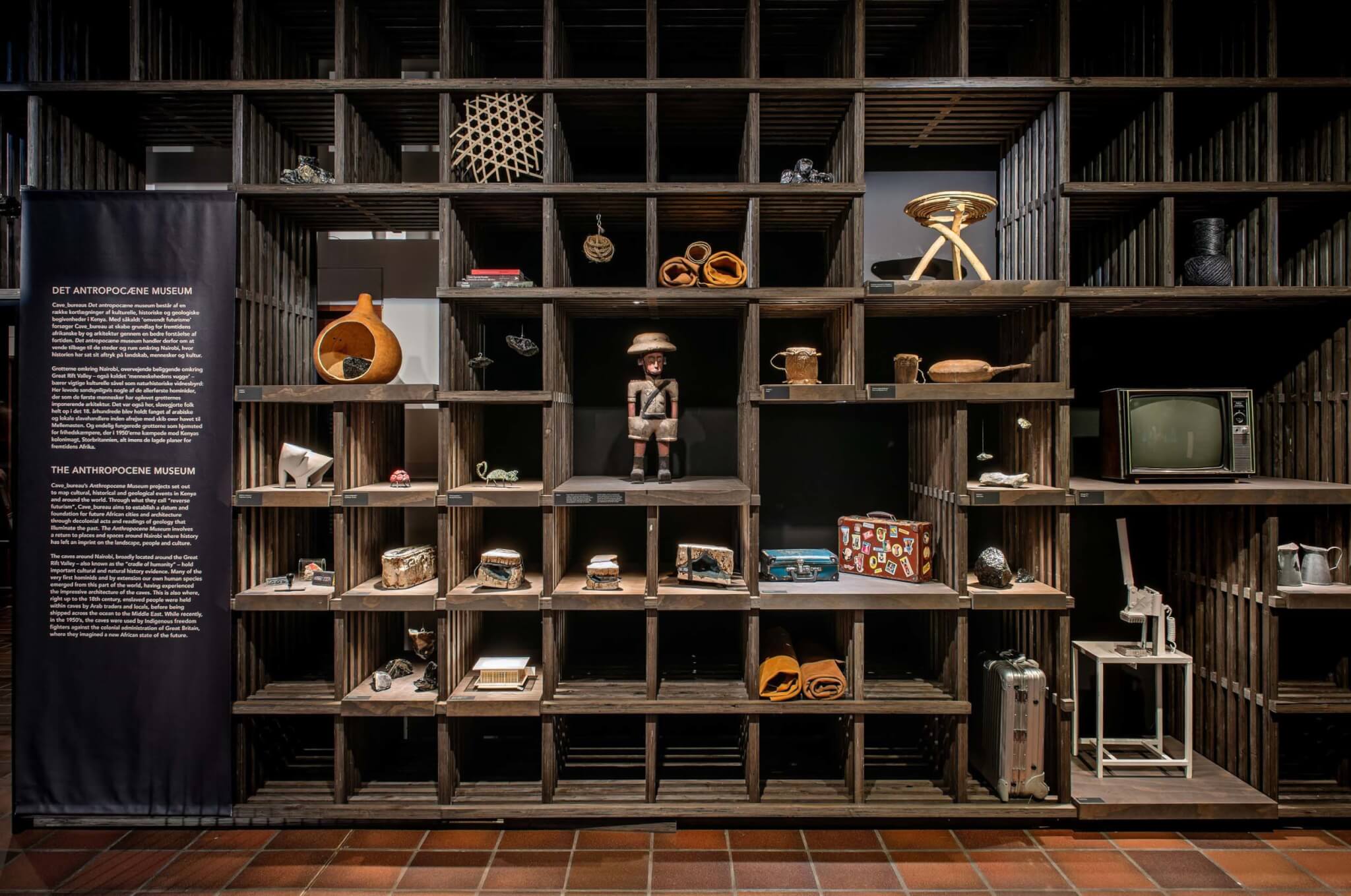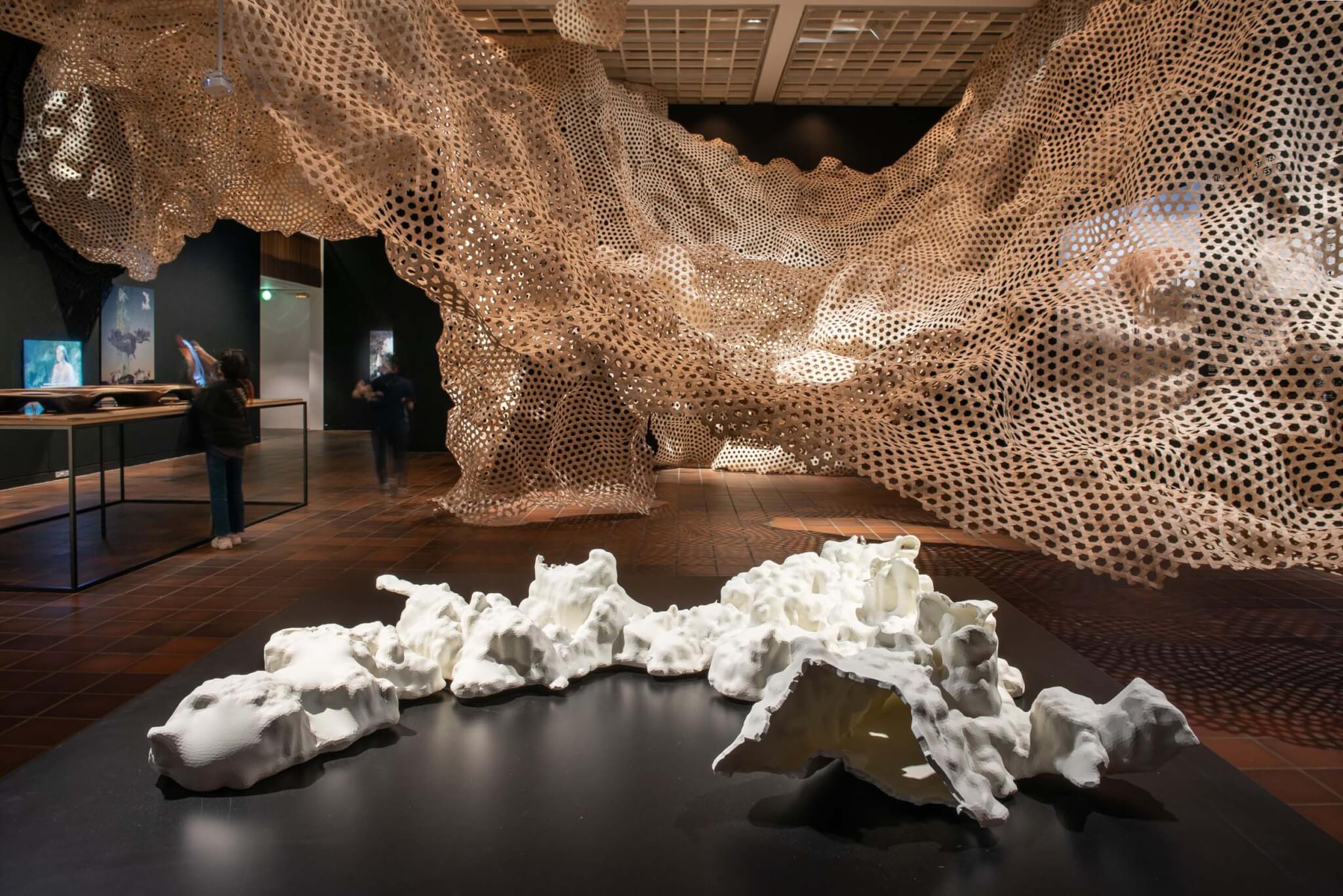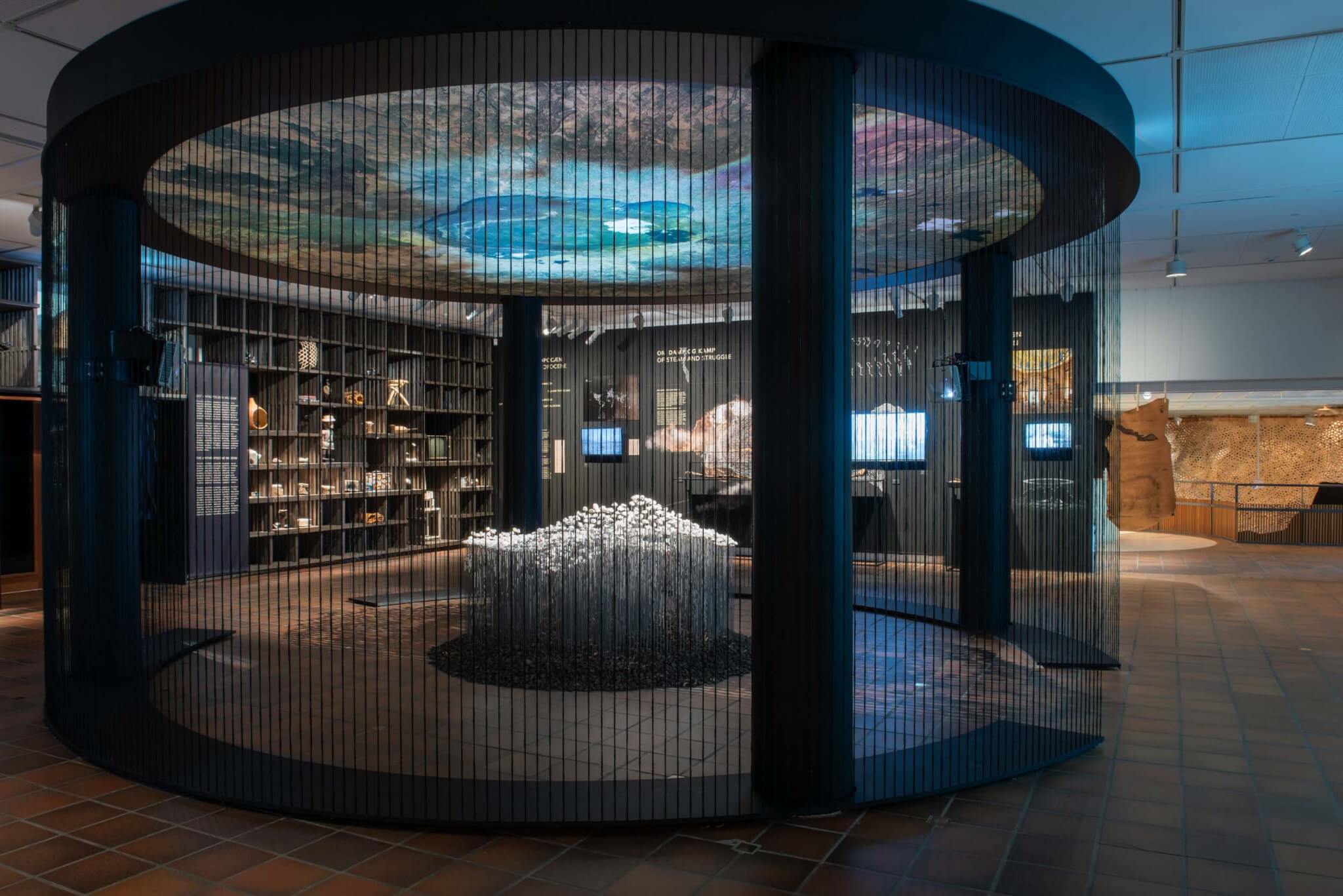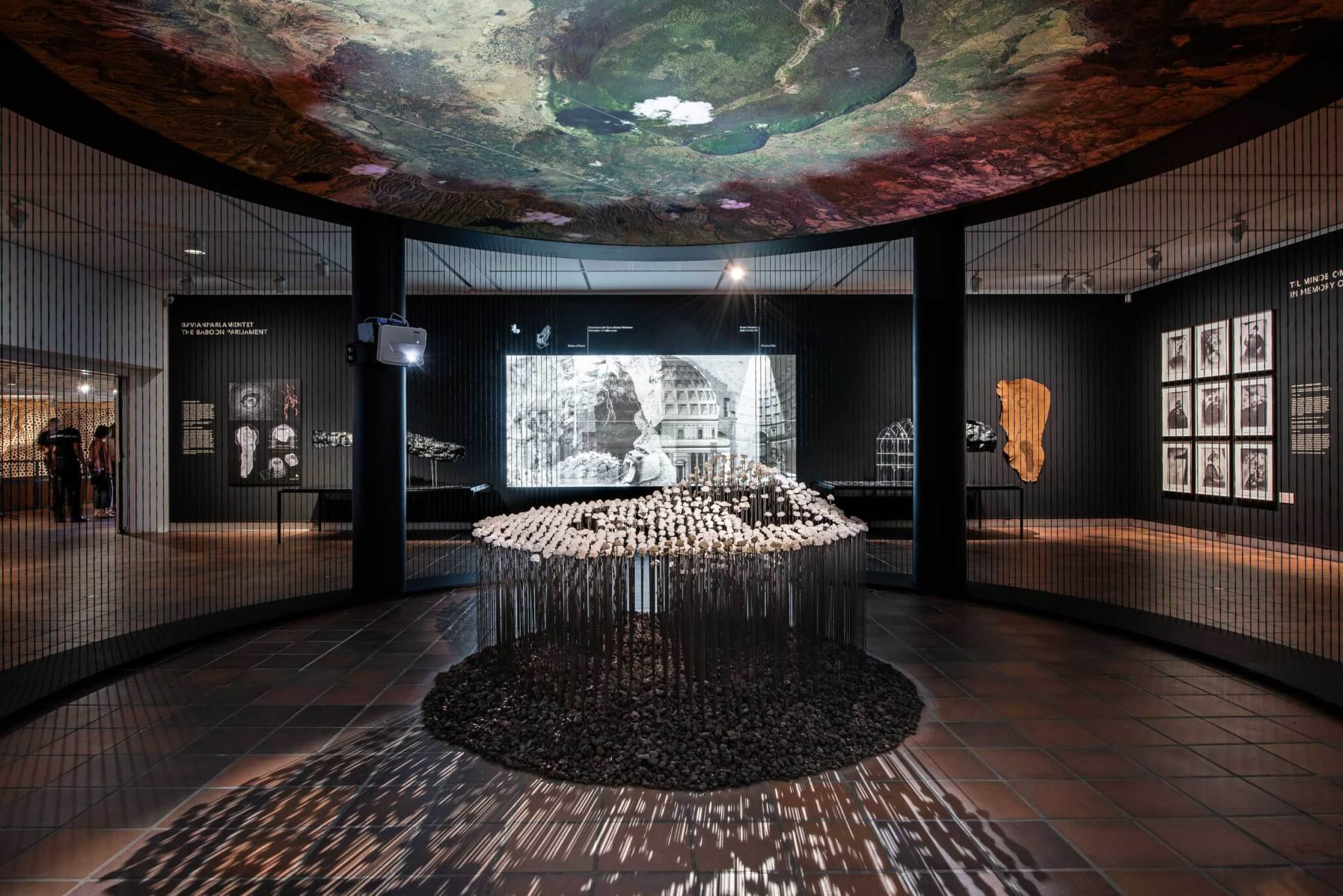The Architect’s Studio: Cave_bureau
The Louisiana Museum of Modern Art
Humlebaek, Denmark
Through November 26
About an hour from Copenhagen, The Louisiana Museum of Modern Art hugs the Baltic Sea. This year, the world-class arts institution is closing its five-year exhibition series, The Architect’s Studio, with a sixth and final show highlighting the work of Nairobi-based Cave_bureau. Cave_bureau’s exhibition follows those of Wang Shu, Tatiana Bilbao, ELEMENTAL, Anupama Kundoo, and Forensic Architecture. The design on display is an immersive installation bridging disparate themes of histories of the enslaved, cultural craft, and architectural form making.
Fitting for the studio name, the form they’ve chosen to anchor the show is a cave, albeit an abstract one. The structure, like a theatrical drape with dramatic folds, hovers above the dimly-lit gallery featuring archival materials, surveys, and studies that together tell a story about Kenya’s recent past, both social and geological. The ephemera are retrieved from Cave_bureau’s ongoing Anthropocene Museum project, which they first presented at the Venice Architecture Biennale in 2021.

Woven from rattan material, the cave structure stems from the studio’s 3D scans of the Shimoni Cave in eastern Kenya, near the Indian Ocean. These have been recreated at a 1:1 scale in collaboration with The Centre for Information Technology and Architecture at the Royal Danish Academy (CITA). Reaching to the cave, however, is only possible though the show’s (un)welcoming installation: a portal-like sculpture titled The Door of No Return. This was the name given to an infamous 18th century structure that served as a center for the slave trade on Gorée Island, just off the coast of Senegal. Made of limestone stalactites, the door serves its function but also encapsulates the trauma—both human and ecological—that the overall project investigates inside. While paying homage to the limestone found in the Shimoni Cave, the duo sourced the installation’s material from the quarries in Faxe, Denmark.
Curator Mette Marie Kallehauge told AN that Cave_Bureau is “a practice that does not build at all but instead investigates space while still using the tools of architecture. [They] believe in looking at history and past geologies to understand the future—they look at how we arrived at the state we are in now, the Anthropocene, through reverse futurism.”

For Cave_Bureau’s cofounder Kabage Karanja, presenting the show at the Vilhelm Wohlert-designed Louisiana Museum with its deep connections to modernist histories (as well as an archive representing 50 years of ambitious exhibitions) was a welcome stylistic juxtaposition. “Coming together to unpack questions around restitution and reckoning on museology’s past and present was an important exercise,” he told AN. And for Karanja’s partner Stella Mutegi, the fact that the studio is in the business of ideas, not traditional building, renders their ongoing explorations a natural fit for the museum setting. “Through built elements at a gallery space, we can create a relationship between a setting, subject matter, and the audience,” said Mutegi.
A third piece on view, titled Cow Corridor, similarly meditates on histories of colonization in Africa. It directly references forgotten stories of ancient Maasai grazing routes around the studio’s native Nairobi, which were closed to communal pasturage during British colonization in the late 19th century. The main draw for the duo in creating Cow Corridor is to tie the social context of weaving together with architectural potentials under technical advancements. “Weaving, of course, is an ancient practice done by many communities around the globe. But especially in the global South, weaving is a form of construction for shelter,” said Mutegi. “We look into how weaving can be, for lack of a better word, upscaled.”


Like the rest of the exhibition, Cow Corridor is both a sculpture and a structure; an architecture that deploys weaving as an architectural form, yet one devoid of a utilitarian purpose. Instead, it monumentalizes the material’s poetic heft at grand scale. While the studio settled on rattan after experimenting with different materials with various technical challenges, the wicker weave is, according to Karanja, “an ideal way to talk about geology which is a static formation.” Cave_bureau sought to create a cave-like experience, but from the negative space as structure solely embodies the outline of its ceiling. “If you came to Kenya, you would be experiencing the cave, but here, you are seeing its void and the volume,” he added, “so this is rather a spiritual experience of an ecological form.” The duo believes this in-between orchestration also taps into the show’s other theme of slavery through the lens of geology. In Mutegi’s words: “You are observing the slaves holding space—the show manifests the idea that we are intertwined with the geology and weaving elaborates the idea that we are embedded in geology.”
Osman Can Yerebakan is an art, architecture, design, and culture writer based in New York.











